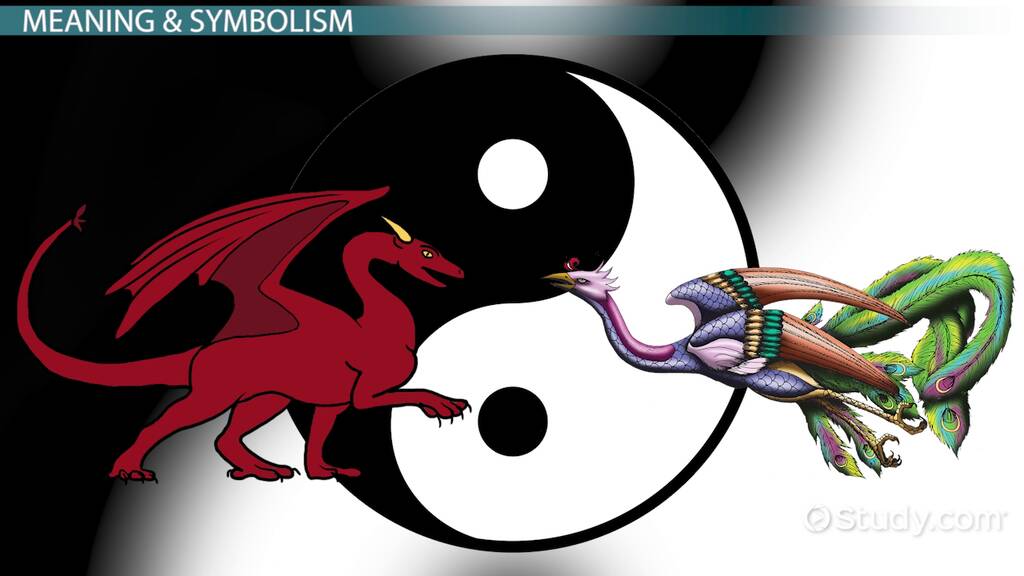Dragons and phoenixes are two popular mythical creatures in Chinese culture. Although they are often seen together, they represent different concepts. According to ancient Chinese mythology, dragons are symbols of strength, power, and good fortune, whereas phoenixes signify femininity, elegance, renewal, and revival. Moreover, dragons represent chaos and destruction, whereas phoenixes represent hope and a new beginning. Dragons have the power of physical strength, shapeshifting, and weather control, whereas phoenixes possess healing powers, resurrection abilities, and wind control abilities. Understanding the meanings and powers of these mythical creatures can help us appreciate Chinese mythology and culture’s complexity.
Dragon vs. Phoenix: Comparing and Contrasting the Powers of Mythical Beasts
Mythical creatures have always fascinated humans, with their mysterious powers and magical abilities. Two of the most popular mythical creatures in traditional Chinese culture are the dragon and the phoenix. These two creatures are often featured together and are believed to complement each other. While dragons are considered symbols of masculinity, the phoenix represents femininity. However, many people are curious about how the powers of these creatures compare and contrast.
Origins of the Dragon and Phoenix
The dragon and the phoenix both have rich histories in Chinese culture. According to ancient Chinese mythology, the dragon symbolizes strength, power, and good fortune. The dragon was also a symbol of the Emperor and the imperial family, believed to bring prosperity and good luck to the land. The phoenix, on the other hand, represented femininity and elegance with its feathers of gold, red, and pink. The phoenix was also associated with good luck and was considered to represent the Empress.
Differences in Appearance and Characteristics
Dragons are typically depicted as large, winged creatures with smooth, scaly skin and a long, sinuous body. Their appearance is similar to that of a snake or a serpent, with eyes that glow like jewels and a mouth full of sharp teeth. In contrast, Phoenixes are beautiful and graceful birds, with magnificent multi-colored plumage that shimmers in the light. They have a curved beak, a long neck, and a glorious tail of feathers. Unlike dragons, phoenixes are not aggressive creatures, and their tears are known to have healing properties.
Different Symbolic Meanings
Dragon and phoenix have different symbolic meanings. As mentioned above, the dragon represented power and good fortune, and it was associated with the Emperor and the imperial family. However, dragons also represented the unpredictable nature of life, chaos, and destruction. Therefore, they were feared as much as they were revered. In contrast, the phoenix represented hope, renewal, and revival. The bird was believed to have the power to rise from its ashes, resurrecting itself anew. The imagery of the phoenix represented the hope of rebirth and the promise of a new beginning.
Different Powers
The dragon and the phoenix are both creatures of magical powers. Dragons are known for their immense physical strength, their ability to breathe fire or water, and their ability to control the weather. Dragons are also believed to have superhuman intelligence and the ability to shapeshift into different forms. Phoenixes possess the power of healing and the ability to resurrect themselves from the ashes. They are also believed to have the ability to control the wind and to symbolize the coming of a new era or a new Emperor.
Conclusion
While the dragon and the phoenix are both powerful mythical creatures, they have different meanings and characteristics. The dragon represents strength and prosperity, but also unpredictability and chaos. The phoenix represents rebirth and renewal, but also good fortune and hope. Both creatures are believed to bring good luck, but in different ways. Understanding the qualities and powers of these two creatures can help us appreciate the richness and complexity of Chinese mythology and culture.
